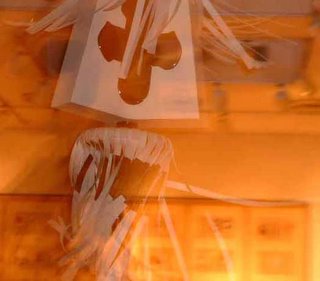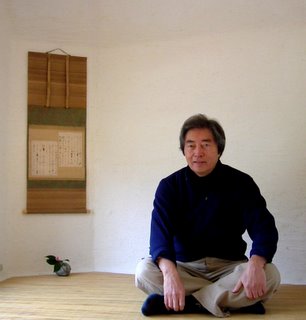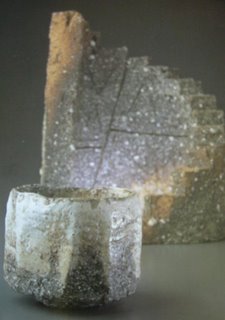Photos from the Japan Ceramic Society Exhibition Jan. 2006





The Japan Ceramic Society recently held it's annual award-winners exhibition in Tokyo at Wako, Ginza. Wako Hall is one of the best spaces in Tokyo for exhibitions as the large room is very flexible in terms of layout. Although I often attend department store exhibitions such as at Mitsukoshi and Takashimaya(they often show the best) I find the galleries very static and stuffy. Not so for Wako as you can see in these photos. The JCS Award is one of Japan's most pretigious for the clay world and and a complete list--make that almost complete, 2005 winners Nakajima Hiroshi and Ichino Masahiko have not been added yet as well as winners for 2004, who are Hayashi Kuniyoshi, Kiyomizu RokubeXIII and Tashima Etsuko.
Every year the JCS has a theme yet that was bypassed this year to allow each artist to select what they wanted for the 60th anniversary of the JCS's founding. It was a good choice as the works this year were more varied and interesting than years past. Standouts included a spectacular Hagi chawan by Miwa Jyustsu ( a little over 6 million yen..) and a tall Bizen work by Kakurezaki Ryuichi. On the disappointing side was the lack of energy found in Tsuji Seimei's recent output; it's quite sad actually as I'm sure it reflects his current health, which I've heard is not on the bright side, unfortunately. Wada Morihiro's selection lacked the crisp design motifs he's so well known for and the form was lackluster, as was the jar by Mashiko's LNT Shimaoka Tatsuzo. Surprises included a silver glazed bowl by Mori Togaku and Hayashi's whimsical 'doll on wheels.' The variety of forms and styles was quite good and the exhibition was a success for the JCS as many came from throughout Japan to enjoy the selection. Here are a few photos---sorry there will be no slide show on e-yakimono for the foreseeable future---and if anyone would like more photos please email me. For those who can view Japanese, the JCS HP is at http://www.j-ceramic.jp/index.html and a complete list of JCS winners until 2004 in Japanese only can be found here: http://www.j-ceramic.jp/prize/successive.html























